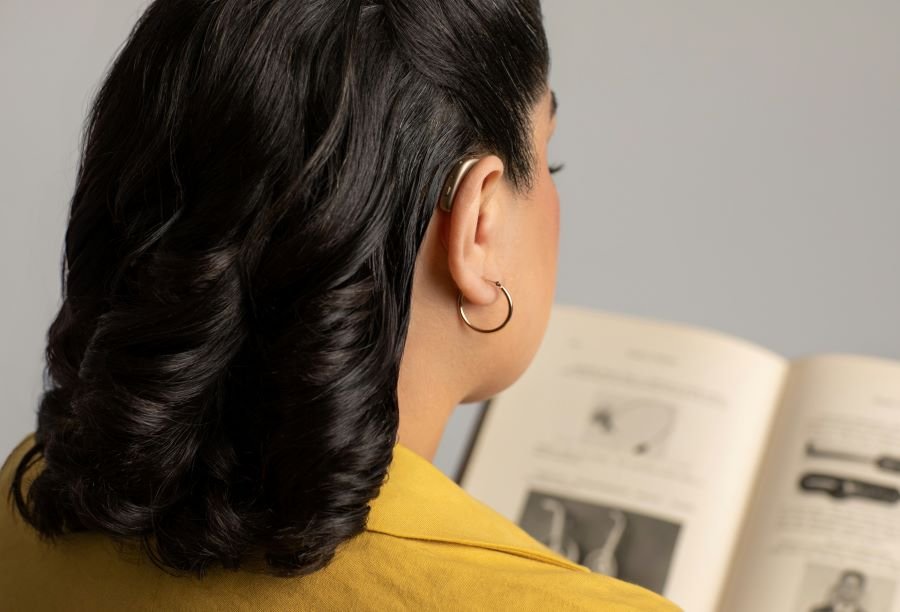Essential Assistive Devices for Hearing Loss in Family Settings: 10 Key Options
/Living with hearing loss can present unique challenges in various aspects of life, from communication to everyday activities. However, thanks to technological advancements, a wide range of assistive devices is now available to help individuals with hearing loss navigate these challenges and enhance their quality of life and even more within a family setting.
In this article, we will explore ten must-have assistive devices that can significantly improve the daily experiences of individuals with hearing loss.
Credit: unsplash.
1. Clear Communication Spaces
Effective communication is essential for building strong family relationships. However, it can be a challenge when one or more family members struggle with hearing loss. For moms with hearing loss, creating spaces that facilitate clear communication becomes even more crucial. Start by identifying and eliminating sources of background noise, including turning off noisy appliances, using sound-absorbing materials like rugs or curtains, and choosing quieter alternatives where possible.
Positioning furniture to allow for face-to-face conversations is another excellent way to enhance communication. This helps individuals with hearing loss better utilize visual cues, such as lip-reading or facial expressions, to enhance their understanding of conversations.
2. Visual Alerts and Signaling Systems
Visual alerts and signaling systems can make a significant difference in aiding moms with hearing loss. One way to enhance accessibility in your home is by installing visual doorbell indicators that flash or reflect light when someone is at the door. This can help ensure that individuals who may not have heard the doorbell ring can still receive visitors.
Consider incorporating visual smoke detectors and carbon monoxide alarms, which use strong visual cues to ensure safety even when auditory signals go unnoticed. Additionally, implementing vibrating alarm clocks can ensure that everyone wakes up on time, without solely relying on auditory cues.
3. Assistive Listening Devices
Assistive listening devices (ALDs) are high-tech tools that can significantly improve the quality of life for moms with hearing loss. ALDs come in various forms, such as personal amplifiers, loop systems, and FM systems. These devices help reduce background noise and amplify important sounds, making it easier for parents with hearing loss to engage in conversations, hear their children's voices, and participate in family activities more effectively. It's important to understand the unique needs and preferences of each individual and explore the different types of ALDs available to find the one that works best for them.
4. Smart Home Technology
Over the past few years, smart home technology has revolutionized accessibility for individuals with hearing loss. Moms can benefit immensely from integrating smart home devices into their living spaces. For example, smart systems that sync with alarm systems, smoke detectors, and doorbells can notify parents about events visually or via vibration.
Smart thermostats, lighting, and appliances can also be controlled conveniently through mobile apps, providing greater independence and autonomy for moms with hearing loss. The latest advancements in this technology have proven to be a game-changer in ensuring accessibility and convenience for everyone.
5. Visual Communication Tools
Visual communication tools can play a crucial role in bridging the communication gap for parents with hearing loss. Encourage family members, especially children, to learn and utilize basic sign language gestures. Alternatively, visual cues, such as hand gestures or facial expressions, can supplement verbal communication and help convey emotions and meaning. Introducing these practices into the family routine can foster inclusivity, strengthen the bond between family members, and improve communication within the family.
6. Captioning and Subtitles
Implementing captioning and subtitles in your family home can significantly enhance the accessibility of audiovisual content. Many television sets and streaming platforms offer closed captioning options that display text on-screen, enabling moms with hearing loss to enjoy movies, television shows, and even online videos with ease. Encouraging family members to utilize these features promotes an inclusive and accommodating environment for everyone. This simple yet effective practice can help ensure that everyone can enjoy watching their favorite shows or movies together, without missing a beat.
7. Education and Awareness
Creating an inclusive home environment for moms with hearing loss also involves educating family members and raising awareness about hearing loss and its impact. Encourage open conversations about the challenges faced by parents with hearing loss and provide age-appropriate explanations to children to help them understand and adapt. This fosters empathy, support, and cooperation within the family unit. By introducing these practices and having an ongoing dialogue, everyone in the family can better understand and support moms with hearing loss, ensuring they feel included, heard, and respected.
Living with hearing loss no longer means being isolated or missing out on life's important moments. The ten assistive devices discussed in this article exemplify the advancements made in technology that are specifically designed to support individuals with hearing loss.
In conclusion, by utilizing these must-have assistive devices, such as visual alerts, assistive listening devices, smart home technology, and visual communication tools, individuals with hearing loss can greatly enhance their communication abilities, improve their daily experiences, and confidently engage in activities that were once challenging. If you or someone you know is living with hearing loss, it is essential to consider exploring these assistive devices to unlock a world of better hearing and an improved quality of life.
To stay up to date with helpful tips and resources for individuals who are hearing impaired, you can visit websites like HearingPeople.com. These sites provide valuable information and insights to support individuals with hearing loss on their journey to improved accessibility and inclusion. Remember, with the right assistive devices and resources, individuals with hearing loss can overcome challenges and fully participate in all aspects of life with confidence and independence.
Disclosure: This is a collaborative post.




























